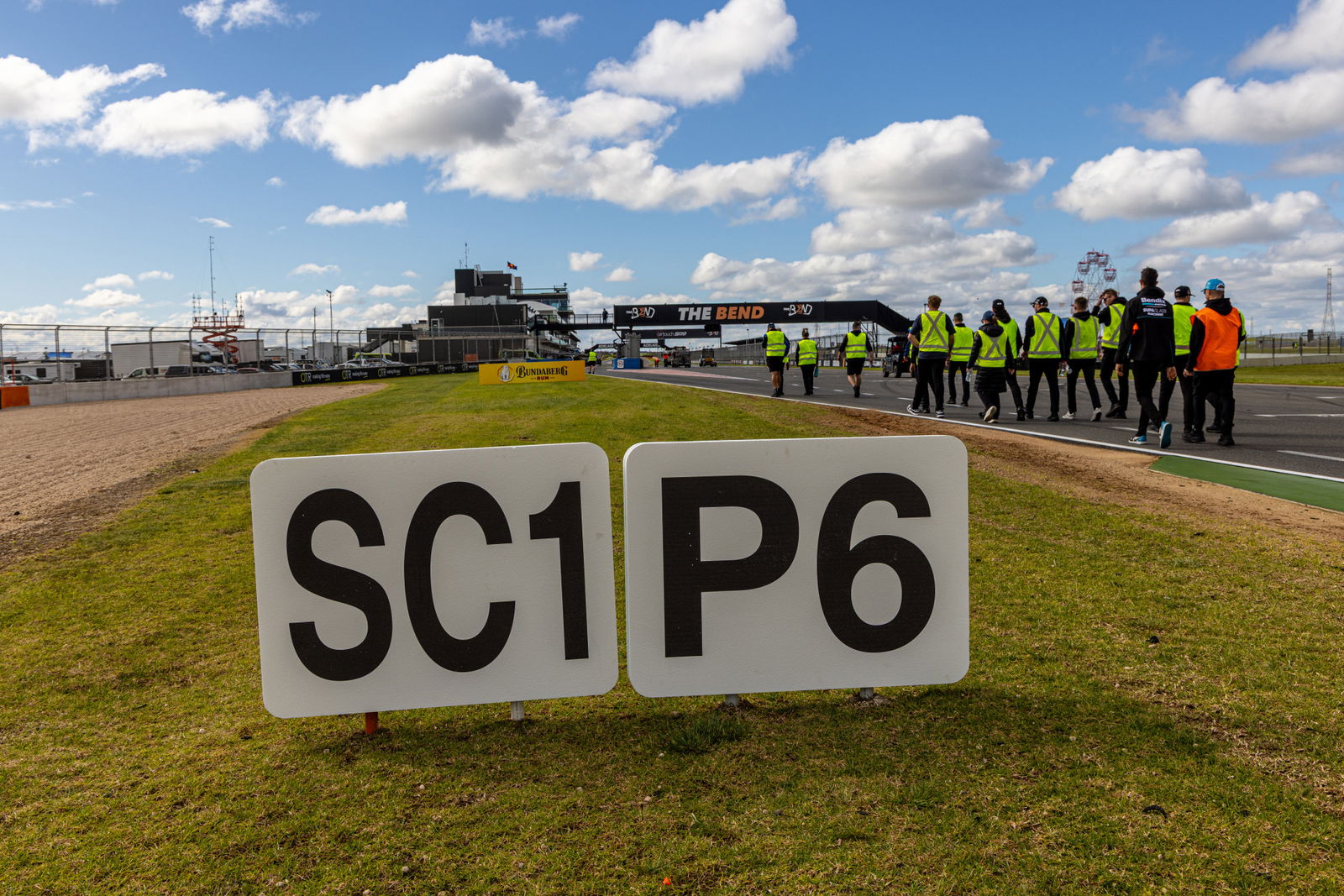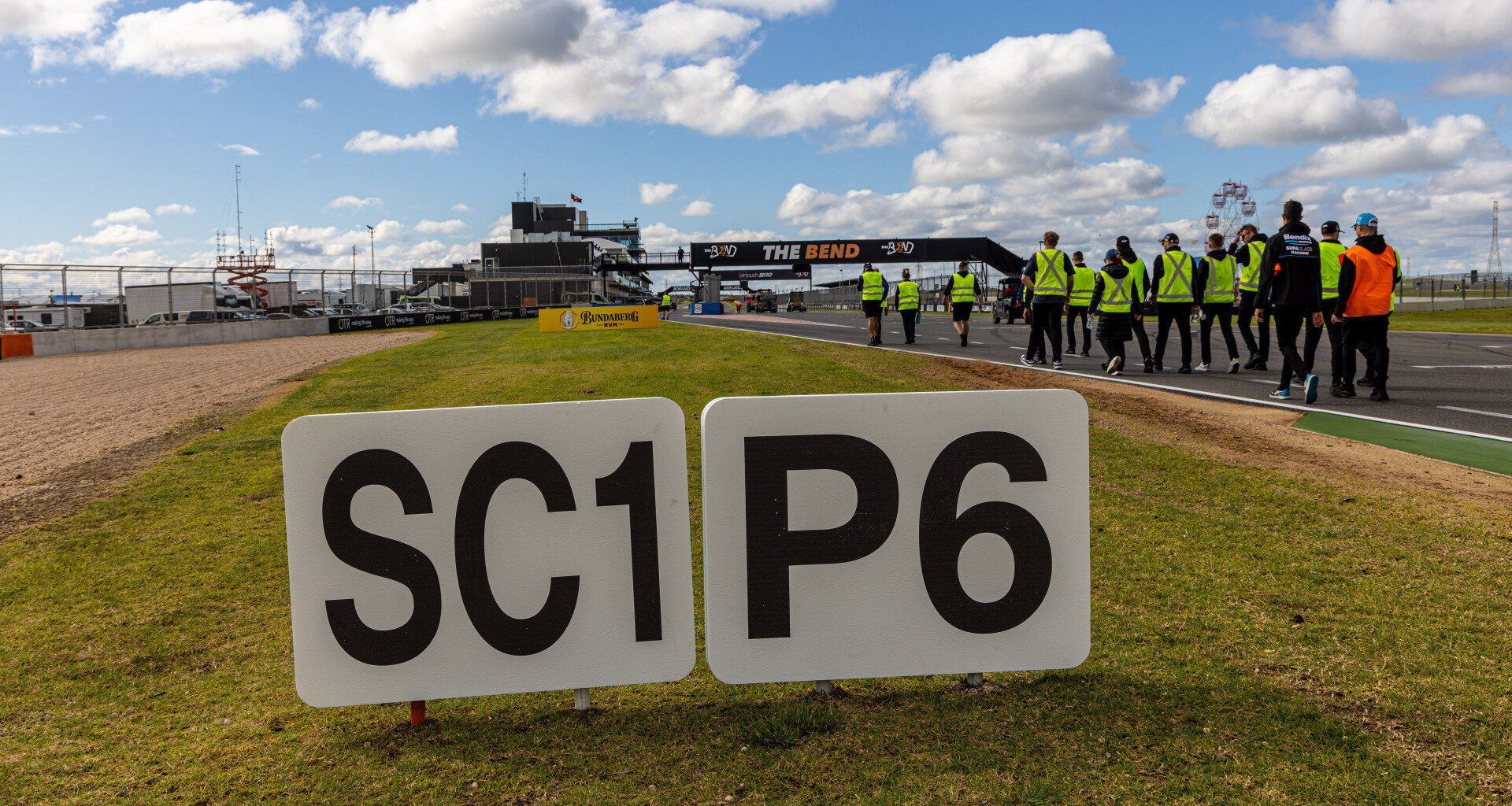
Boards have been added around the circuit to designate slow zones. Image: InSyde Media
Race control ran through the revised procedure in the early stages of the 30-minute session.
The Safety Car process still kicks off with a 15-second countdown before 80km/h speed limiters need to be activated. However, that now coincides with the closing of pit lane.
A second countdown follows, at which point the pit lane is re-opened, the physical Safety Car is deployed onto the circuit, and limiters are only required in a designated ‘slow zone’.
The convoluted system is intended to prevent the race-defining pit stops that occurred under yellow at Ipswich but has been met with concerns it’ll cause other issues.
Supercars to trial Slow Zones at The Bend
Friday’s practice run included the slow zone being implemented between Turns 4 and 7.
“I actually found it quite fun to be honest,” said championship leader Broc Feeney of the trial.
Win a trip to the Adelaide 500 for you and 4 friends 👉: FREE ENTRY
“I thought it was pretty cool, to sort of race up to a line and jump on the brakes. I had Will [Brown] just in front of me, so I was trying to catch him there.
“But then you’d let go of the limiter and you pull away, so I actually found it quite amusing, but obviously we’ll see what it’s like in the race.”
Teammate Will Brown said the system is “something that you definitely have to get used to”, noting that drivers are relying on their engineer to count down before the limiter deactivation.
“I think there’s a bit of time there to gain, depending on how lenient you go. It’ll be interesting,” he said.
“But also braking up to the [slow zone] line, that’s something new for us out on track, like for me then it wasn’t too bad.
“I’m sure for everyone you come out of Turn 3 there and quite quickly braking, but if there’s one down the front straight, it’s going to be interesting that’s for sure.”
Brown blazes top time in Practice 3 at The Bend 500
Leading Ford driver Thomas Randle also pointed to the deactivation of the limiters as a new process to adjust to.
“The countdown is on the dash when you’ve got to activate, but the way it is, there’s no countdown to deactivate,” said Randle.
“So purely at the moment, well that session, we were relying off engineers to tell us.
“So, like Will said, maybe there’s some sort of tolerance there, but in terms of the slow zone, that one seemed to work okay.
“It was at a point where it’s not that fast out of Turn 3 and deactivate out of Turn 6, so it was probably a good one to trial for race control. But it could be very different in the race.”
A Safety Car period could still turn Sunday’s race on its head, with anyone able to dive into the pits before it closes likely to gain an advantage.
“I suppose you just try and think of all the one-off situations that could happen, and you sort of just hope that it all goes to plan,” added Feeney.
“I’m sure that one of the races in the next year or so, there’ll be a surprise, and something happens out of it.
“But I think the way they’ve explained, and it all goes smoothly, it should be quite fair for everyone.
“I think you can still get caught out where you are in the micro sector when you deactivate and all that sort of stuff.
“So, there’s still a bit to play out, but I thought it went well.”
Brown’s co-driver Scott Pye was among those watching on from pit lane during the trial and feels there’s plenty of time to be won or lost during the process.
“It’s confusing, but I think it looked like all the drivers got it pretty well worked out,” he said.
“I think the challenge you’ll have is just maximising it, making sure you don’t give up any time on track.
“It’s easy to lose plenty when there’s now slow zones and things like that that will come after the first procedure.”

